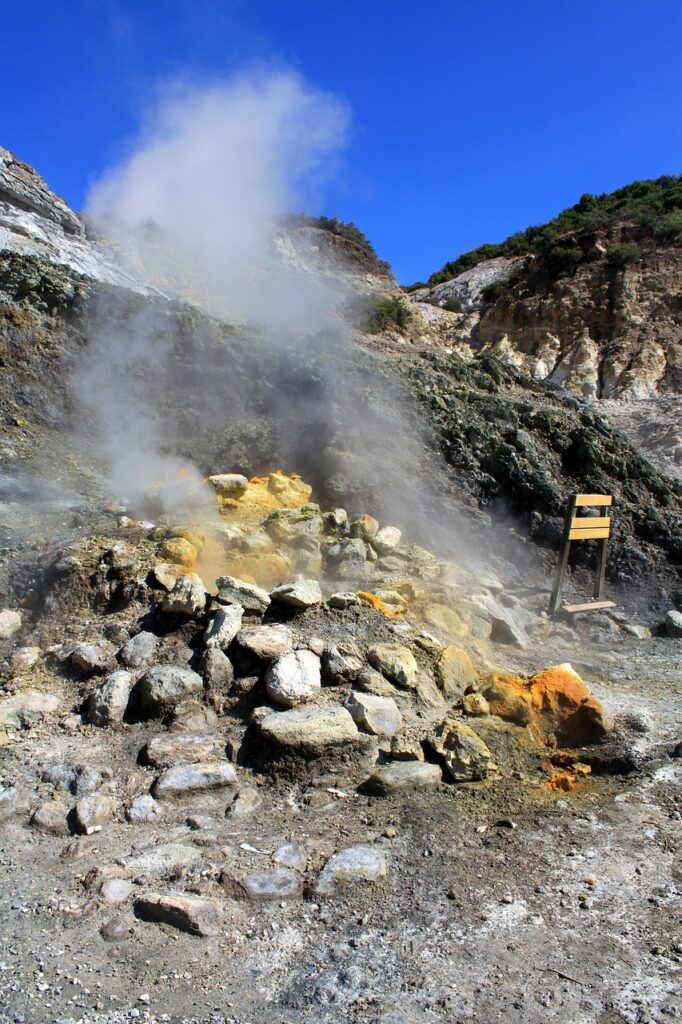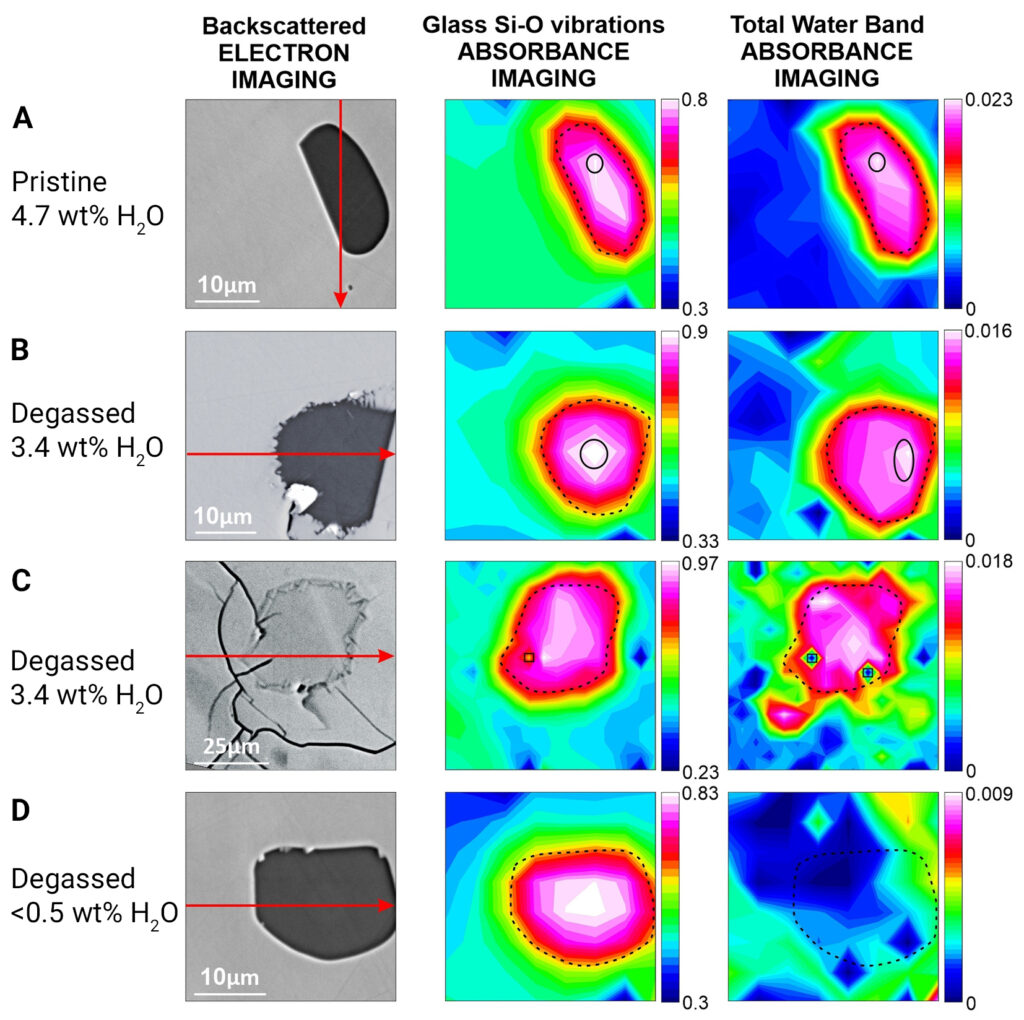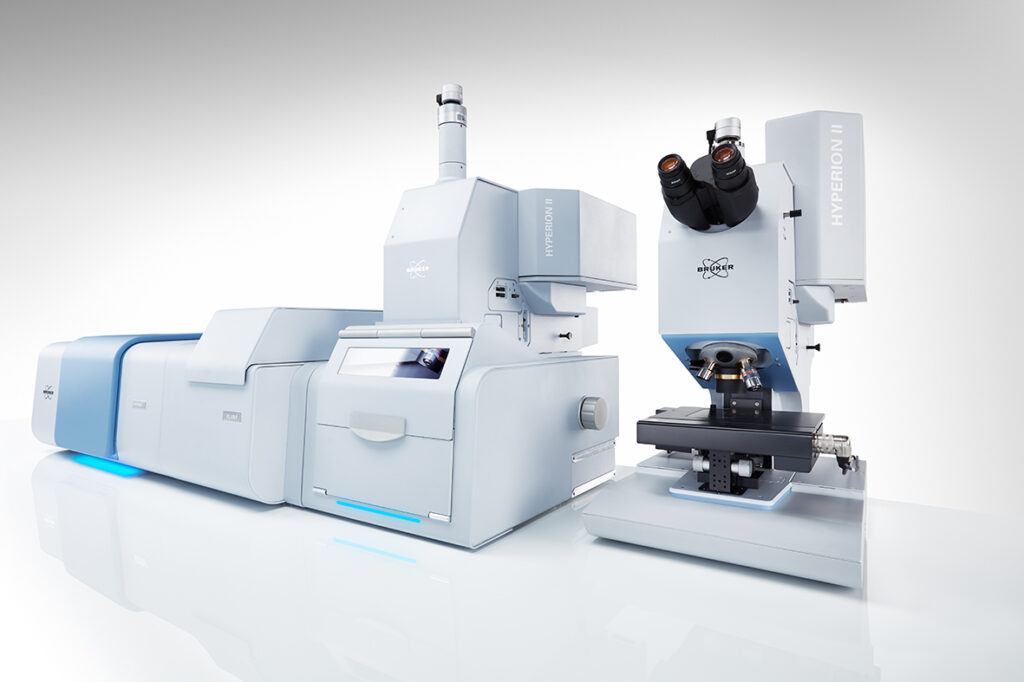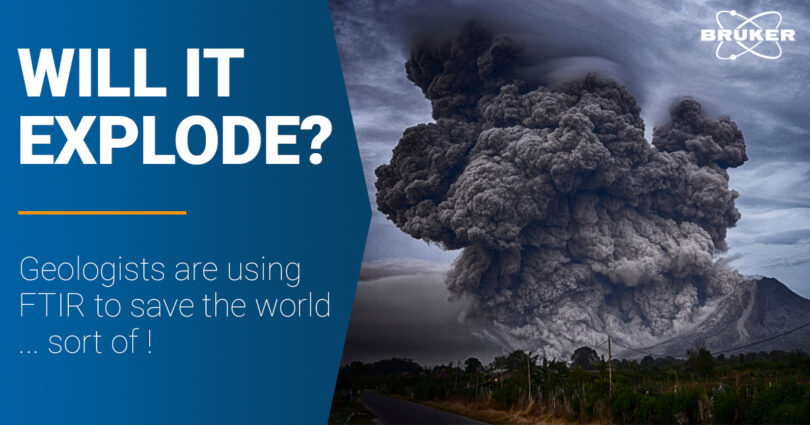The explosiveness of volcanoes can be determined by using FTIR microscopy. By implementing FPA detectors explosive gases can be quantified.
The Phlegraean Fields near Naples are currently a hot topic – pun intended.
For about 2 years, the activity of this supervolcano has been increasing. Now, there are serious concerns about an imminent eruption. Scientists are working 24/7 to determine if and exactly when an eruption might occur.
But the efforts of scientist to assess the dangers of volcanoes go beyond that. Through rock analysis, they try to determine how destructive eruptions could be and if pyroclastic flows will occur. Interested in how they do that? Yes?
Then join us on this adventure into geology.

Explosive explanations
To determine the strength of a potential eruption, researchers conduct analyses of rocks from previous eruptions. These rocks may contain melt inclusions that preserve data about the explosivity of a volcano.
Here dissolved gases like CO2, H2O, and SO4 play the key role. The concentration of these pre-eruptive gases is a key parameter controlling volcanic behavior.
Quantifying the most common gas, H2O, is an important step in predicting the intensity of an eruption. The more H2O the inclusions contain, the more explosive the volcano. Unfortunately, there’s a catch.
One must find out whether the melt inclusions are pristine (original) or if they lost water during or after the eruption. Only when researcher are able to determine this accurately can they proceed to understand the impact of water on the explosiveness of the magma.
And who can assist them with this? FTIR!…of course.
ATR-FTIR: A rising star in volcanic research
Transmission FTIR is a well established method in the analysis of melt inclusions. It has two downsides, though. First, the sample preparation is time consuming. Second, the small melt inclusions are difficult to analyze.
This is where ATR-FTIR comes into play, addressing both challenges. There is no need for a tedious sample preparation and it also works for small sample sizes. On top of that, when combining an ATR objective with a Focal Plane Detector (FPA) it is possible to image H2O in melt inclusions. This approach can help to determine if H2O is pristine or not.
How this works?

Scientific background
The melt inclusions contain various components, including a glassy melt phase. This glass matrix holds various components such as H2O. To evaluate its pristinity, researchers use ATR-FPA-FTIR to first ensure the glass matrix is undisturbed.
If cracks or alterations are present, it suggests that the water may have escaped. This would make the remains of the water non-pristine. In cases where the glass matrix appears intact, it’s crucial to examine whether the water distribution within it matches the matrix itself.
Deviations between structural images of the glassy melt and water images indicate potential water leakage. If this is the case, the data is unusable for determining volcanic explosivity.
However, if the images align, researchers proceed to calibrate and measure the water content within the glass structure. In this case a simple rule of thumb applies: The greater the water content, the higher the explosive potential of the volcano.
For this challenging research the scientists used Brukers HYPERION FTIR microscope.
Why Bruker?
Simply put, Bruker is the only FTIR solution provider that offers devices with an FPA detector. The HYPERION is one of these devices. but what exactly are the advantages of the FPA detector in the context of volcanic melt inclusions?
- High Spatial Resolution: FPA detectors can provide high spatial resolution, down to fractions of a micrometer. By that they allow for detailed imaging and analysis of small features in samples.
- Efficiency: FPA detectors capture data simultaneously across an array of detectors. This makes the data acquisition process faster and more efficient. Especially when compared to traditional point-by-point scanning methods. This efficiency is valuable for analyzing a large number of samples. And that is beneficial when examining multiple eruptive units.
- Imaging Capabilities: FPA detectors can be used to create spatially resolved chemical images. In volcanic research, this is utilized to distinguish between degassed and pristine melt inclusions based on water imaging.
- Calibration and Quantitative Analysis: FPA detectors can be calibrated for quantitative analysis: This is important for accurately measuring the water content in melt inclusions.

Conclusion
Researchers work hand in hand with authorities to protect the population from the effects of volcanic eruptions to the best of their ability. An important aspect of this work is to determine whether a future volcanic eruption will be effusive or explosive. This knowledge helps officials determine what emergency procedures should be initiated.
For the Campi Flegrei, the exact consequences of an eruption are uncertain. According to expert estimates, an eruption could eject up to 1,000 km³ of volcanic rock. A nightmare for the population living in the region and potentially also for the rest of the world.
We at Bruker hope that our instruments can make an important contribution to the deepening of volcanological knowledge in order to increase the safety of people living in volcanic active regions. Among these instrument is not only the HYPERION but also our products revolving around remote sensing2.
Would you like to know about FPA detectors? Then read this article the differences between mapping and imaging:
Reference
- Popa, R.G., Tollan, P., Hermann, J., Bachmann, O. (2023). Degassed versus pristine: Evaluating melt inclusions with a new ATR-FPA-FTIR calibration and water imaging method in rhyolitic melts. Chemical Geology: 615; 121217.
* Please note that changes were made to the papers original Figure 6. Samples analyzed in the paper were collect at the Nisyros-Yali volcanic center. - Burton, M., Allard, P., Muré, F., La Spina, A. (2007). Magmatic Gas Composition Reveals the Source Depth of Slug-Driven Strombolian Explosive Activity. Science: 317; 227-230.








